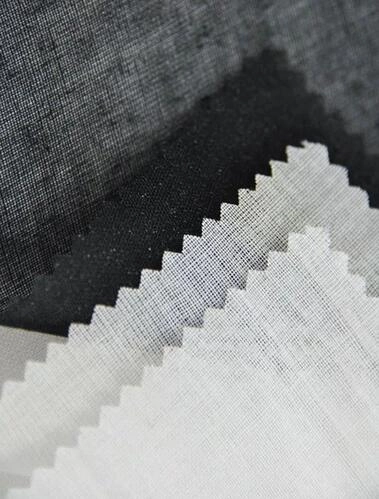In garment manufacturing, lining is used to support and control the structure of specific areas of the garments and to hold their actual shape. The lining is usually attached to the shell fabric through fusing or sewing. It is available in various types depending on the function and application areas of the garments. Woven interlining is commonly used to support the front parts of jackets, cloaks and coats as well as some waistlines, button-holes, and thin knits that need extra stability. This is because it has a high thread count and is stiff with a plain weave, thus providing strength and stability to the garments.
Knitted interlinings, on the other hand, have a smooth surface with good elasticity, which enables them to stretch and give a soft handle to the garments. It also has good heat resistance. The elasticity of knitted interlinings also makes it easy to flat pattern cut the fabric. The elasticity and stretch of these interlinings can be enhanced further by adding a small amount of spandex to the fabric.
These fusible knit interlinings are made out of fine polyamide yarn and have a very soft and elegant hand feel. They are very lightweight and extremely elastic both in warp and weft direction, which makes them ideal for large and small part fusing of very elastic high quality outer fabrics such as jerseys. Their adhesive coating is very easy to iron on and lasts, even after many washes.
Unlike the traditional woven interlining, this type of lining is made from circular knitted fabrics. It has a high stretch and excellent elasticity, which enables it to provide a wide range of functionalities. Besides, it also has good heat resistance and can withstand repeated washings.
Its elasticity and flexibility make it ideal for use in jackets, cloaks, coats and other garments that require good elongation and flexibility. Moreover, it is less likely to wrinkle than the traditional woven interlinings.
Its high elasticity and flexibility also allow it to bind better to the shell fabric, and this improves the bonding strength. In addition, the elasticity of these linings also reduces the stress on the rib and weft of the fabric, which is useful in improving the strength and tensile properties of the finished garment. In addition, it is easier to sew than woven interlinings and has a better drape. Moreover, it can be machine washed and dry cleaned. It also is non-flammable and eco-friendly.
